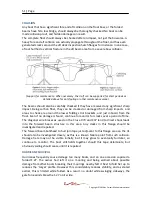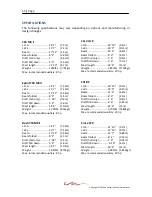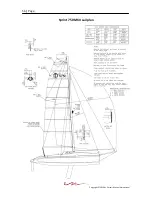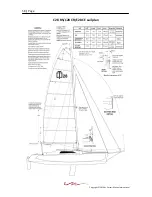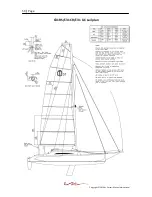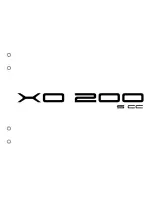
44
|
Page
Copyright © 2014 by Corsair Marine International
If the above procedure does not work, then try flooding the end that needs to sink, or
add some crew weight (ready to abandon ship once the end concerned starts to go
under). If this fails, try towing the other direction. Some controlled flooding may also be
required. Towing sideways will not work.
Another righting method, that uses the folding system, has been tested and shown to be
workable on a Farrier designed 19’ Tramp in choppy conditions, and on an F-27 in
smooth water. The Tramp was deliberately rolled over, the F-27 was a capsize.
The method has not been successfully tested at sea and thus should not be tried at sea,
it being better to wait for assistance, as the righting action does tend to flood the
inverted boat more. Not a good idea if the righting attempt doesn’t work.
The F-27 capsize was caused by the spinnaker combined with a mainsail sheeted tight
amidships (never do this while under spinnaker in any circumstances). Both sails were
being carried in winds gusting to 35 knots, with
no one
holding the sheets. Crew was
just owner and 10 year old daughter. Boat speed was over 29 knots and the capsize
happened while changing from a run to a reach, and the crew were not able to release
the sheets in time. In these conditions the sheets should always be hand held without
exception. The spinnaker sheet can be easily led to the windward jib sheet winch,
making this very easy to do.
After capsize both crew surfaced under the wing nets, but found plenty of space to
breathe due to the high floating position. There appears to be little danger in being
trapped here. They were then able to get on to the upturned boat (now a safe 19’ wide
raft), which was towed ashore, and righted, with relatively little damage, the next day.
The procedure using the folding system is as follows:
1.
Put on a lifejacket this is essential for easy working in the water.
2.
The boat will be floating side on to the waves, and you should first attach righting
ropes to the windward float beam areas and bring them over the main hull to the
leeward float. Use a pair of lines for each available crew member.
3.
Disconnect and save both shroud tensioners if fitted, which can then be used to
help as necessary.
4.
Release top shrouds from the float chain plates, and allow to drop with fixed
masts. Secure a line from the leeward shroud, with rotating masts, to the leeward
float.
5.
Connect a line to the forward beam area on the leeward float and connect this to
righting line from other side using 4:1 shroud tensioner.
6.
Release all beam bolts. This can be done while alongside without diving. The bow
nets may have to be unlashed to reach forward beam bolts.
7.
Stand on the wing net and pull on the shroud tensioner. Th```e float on the side
you are standing on will fold up, your weight helping. Once folded, insert the
beam locking pins. Repeat process with other side float. Smaller designs will fold
up just from your weight on the wing net.
Summary of Contents for 28R
Page 1: ...SAILING MANUAL For Corsair Trimarans ...
Page 2: ......
Page 57: ...55 Page Copyright 2014 by Corsair Marine International CORSAIR SAIL PLANS C24 MKII sail plan ...
Page 58: ...56 Page Copyright 2014 by Corsair Marine International Sprint 750 MKII sail plan ...
Page 59: ...57 Page Copyright 2014 by Corsair Marine International Dash 750 MKII sail plan ...
Page 60: ...58 Page Copyright 2014 by Corsair Marine International C28 RS C28 CR C28 CE sail plan ...
Page 61: ...59 Page Copyright 2014 by Corsair Marine International C31RS C31 CR C31 UC sail plan ...
Page 62: ...60 Page Copyright 2014 by Corsair Marine International Cruze 970 sail plan ...
Page 63: ...61 Page Copyright 2014 by Corsair Marine International C37 CR RS sail plan ...
Page 69: ...67 Page Copyright 2014 by Corsair Marine International C37 CR RS accommodation plan ...
Page 94: ...92 Page Copyright 2014 by Corsair Marine International TYPICAL TRAILER SETUP ...






















